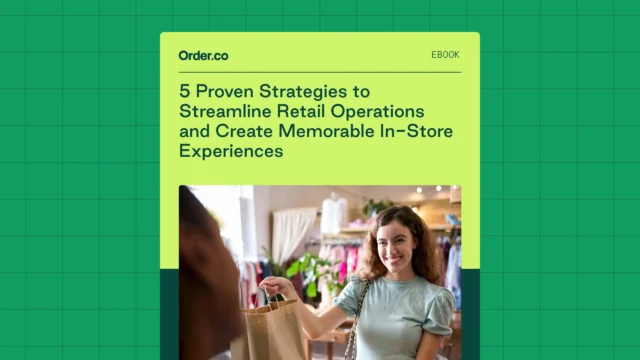Building a Better Retail Asset Management Approach with Technology

Building a Better Retail Asset Management Approach with Technology
Retail managers are juggling more than just inventory levels and shelf placement. Driving sales means managing all the elements that shape a brand’s identity and offerings. True, products are the foundation of retail, but operations and finance are just as important.
Retail asset management is the key to keeping all the aspects of retail sales in harmony. It helps you snag the right products, manage their physical and digital presence, shorten the sales cycle, and control costs in ways that promote growth.
Technology can be a real game-changer for companies that want to master asset management. This article will show you exactly how to balance the essential aspects of retail asset management and bring the right strategies and tools together to boost performance.
Why retail asset management matters
Retail asset management, when done right, can improve your performance and profitability over time. It’ll help you maintain optimal inventory levels, keep your operational costs as low as possible, and wow customers with better product availability and service. With a strong strategy in place, you can make smarter decisions about purchasing, maintaining, and disposing of assets.
While retail procurement management often focuses on tangible assets sourced from outside vendors, you must consider a mix of tangible and financial components to serve your customers and stay ahead of the competition.
Tangible assets
Tangible assets are the things you can touch—inventory, operational supplies, equipment, retail real estate (like stores and warehouses), and other resources that keep the lights on.
Managing your tangible assets might include:
- Inventory management: Tracking products available for sale, which includes preventing overstocking or stockouts (these cost businesses a jaw-dropping $1.77T, according to IHL Group’s retail inventory distortion study)
- Equipment maintenance: Servicing and providing preventative maintenance for equipment like cash registers, scanning systems, and other in-store technology to keep operations running smoothly
- Property upkeep: Maintaining and repairing physical retail properties, including stores and warehouses, to ensure a safe and appealing shopping environment
Financial assets
This category includes cash reserves, investments, receivables, and other financial elements that fund retail operations. How well you control spend in areas like inventory directly affects these retail assets. For example, reducing the cost of goods sold (COGS) frees up cash to pump back into marketing or growth initiatives.
Financial asset management may include:
- Cash flow management: Planning cash flow carefully to cover daily operations like payroll, rent, and inventory, plus forecasting sales and expenses to avoid shortages
- Inventory investment management: Analyzing sales data and market trends to figure out the right product mix and stock levels to meet customer demand while avoiding excess
- Lease negotiations and management: Negotiating better lease terms to cut costs, understanding obligations to avoid penalties, and regularly reviewing agreements to renegotiate or relocate based on market conditions
Each asset category calls for a different strategic approach, yet they hold equal value in driving performance. By bringing procurement and vendor management into one platform, Order.co gives you visibility and control over expenditures, even if you have multiple locations. It can help you maintain cash flow by providing data for improved inventory investment decisions and securing better pricing and contract terms. This allows you to make the best use of your assets to maximize their value.
7 tried and true strategies for retail asset management
Investing in high-performing retail asset management strategies can help your brand stay competitive. But what approaches should you use to improve efficiency, reduce risk, and boost sales?
1. Map every asset
Mapping assets for tracking and lifecycle management gives you the level of visibility you need for tasks like inventory management, equipment maintenance, and future asset lifespan.
Create a detailed inventory of all physical and digital assets, including their location, condition, and value. This helps you allocate and use assets more efficiently, dodge maintenance headaches from extra costs, and access data to help you with decision-making. Plus, asset mapping helps support more efficient operations and creates a clearer picture of each asset’s useful life and value.
2. Use advanced tracking technology
Advanced asset tracking technology puts you in control with real-time inventory monitoring, accurate sales and procurement data for future demand planning, smoother retail supply chain operations, and happier customers.
For companies where automated inventory management or granular asset control (for instance, inventory tracking with RFID tags or barcode tracking) would be cost-prohibitive or unnecessary, a platform like Order.co may be a better fit. With features to help locations buy and track inventory orders, it creates visibility into procurement while ensuring flexibility to order brand-compliant products and replenish mission-critical items.
3. Improve vendor oversight
Vendor management is one of the top components of cost control and procurement efficiency. Smart oversight involves centralizing all of your data, implementing vendor lifecycle management, and prioritizing supplier relationship management to improve collaboration. These strategies lead to smoother operations and stronger partnerships.
Order.co takes the hassle out of managing vendor relationships by gathering your most important vendor information in one place. This allows you to track vendor performance, simplify procurement, and build stronger relationships through timely payments and better negotiations.
4. Minimize risk and loss
Developing strategies to minimize third-party risk is essential for safeguarding your retail locations' financial integrity and operational health. Getting ahead of problems (like reducing product waste or preventing seasonality issues) creates a more stable and secure operational environment that promotes growth and resilience.
Retail loss prevention is the other side of the risk-reduction coin. You need a well-thought-out strategy to prevent the steep financial and reputational costs of theft and damage. This is especially important as incidents rise, with over 85% of small businesses getting hit with an average of over $1,600 in monthly losses from theft. Invest in robust prevention measures to protect your assets and maintain a profitable space.
5. Extend asset lifecycles
The asset lifecycle is a product or asset’s journey from acquisition, use, and maintenance to its eventual disposal or renewal. Squeezing more life out of your assets is a proven way to improve your cash retention and overall performance.
Smart processes for maintaining your assets efficiently will help you cut down on unnecessary expenses and preserve more working capital for growth. And a strong lifecycle management approach will help you milk the maximum value from each asset and contribute to a more sustainable retail business model.
6. Use real-time data analysis
Real-time data analysis offers retail managers valuable insights into inventory management processes and vendor performance. When you have a clear view of what you're spending and where you can save, it's easier to find the right products at the best price and terms.
With Order.co's procurement platform, you can tap into the power of real-time data to simplify procurement. With insights into spending patterns, supplier performance, and product pricing, you can find more ways to reduce costs and optimize spend without compromising on quality or customer satisfaction.
7. Simplify procurement processes
Building more efficiency into procurement processes can help you unlock cost savings, refine supplier segmentation, and take time-consuming manual tasks off your plate. Using technology to automate common processes gives busy retailers more room to focus on strategy, ensuring cost efficiency and productivity.
Order.co’s end-to-end procurement solution helps you automate every aspect of the procurement management process. That includes allowing you to purchase brand-compliant inventory and supplies across different locations, manage their delivery, reconcile and process invoices, make payments, and analyze spend—all from one powerful, intuitive tool.
What are the 5 P's of retail asset management?
The 5 P's of retail asset management are your roadmap for making smart decisions about your asset mix. These principles will help you maintain asset performance and boost profitability.
People
People—employees and leaders alike—can make or break the success of your retail asset management system. Improving this area involves training, empowering, and retaining skilled employees. With well-structured onboarding and the right technology, you can prepare your people to manage assets and maintain cash efficiency as your company grows.
Process
Process means building systems that actually work for managing assets throughout their lifecycle, from sourcing and procurement to maintenance, use, and disposal. Simplifying these processes improves access to retail assets at competitive costs. Ditching manual management activities in favor of well-structured, technology-enabled processes is the best way to keep efficiency high without adding more tasks to your day.
Performance
Performance focuses on how well assets support retail operations. It involves tracking asset utilization, return on investment (ROI), and how acquisition and disposal align with brand goals. Tying tangible asset management to your larger financial objectives can help you spot opportunities to improve resource management.
Portfolio
You want to be sure that your asset strategy actually moves the needle for business objectives. For it to do that, you need to strike the right balance of assets (for instance, optimizing inventory levels to avoid over- or under-stocking). Smart portfolio management addresses market changes and customer desires and helps maintain high satisfaction with good working capital management.
Planning
Strong planning helps you stay two steps ahead by taking a strategic approach to forecasting demand, mitigating risk, and supporting sustainable growth. By understanding the sales landscape, future needs, and the budget for acquisitions, you can drive stronger performance and extend asset lifecycles. Tools like benchmarking, market research, and financial analysis are gold for creating future procurement and asset management plans.
Ultimately, nailing each of the five pillars of effective asset management results in a management approach that perfectly balances inventory needs and equipment maintenance with budget efficiency and working capital.
Retail asset management doesn't have to be complicated
Managing the asset mix of your retail brand requires the right touch, but you don’t have to go it alone. With effective strategies and next-generation tools in your arsenal, you gain useful insights into your asset mix, greater visibility into vendor and lifecycle management data, and a clearer understanding of the complexities of location and brand management.
Order.co brings the most important aspects of retail procurement and vendor management into an intuitive, flexible platform that creates smoother purchasing processes, helps you manage spend, and enhances reporting. It gives you the flexibility to grow your business on your own terms while maintaining control over procurement and financial performance.
Here are some of the perks:
- A curated buying experience that guides procurement using a custom catalog of your most valued products and supplies
- Automations that handle repetitive tasks like purchase approvals, invoice processing, and payment management to take the busywork out of running your retail location
- Comprehensive reporting and analysis tools that give your finance leaders full visibility into spending (not to mention the tools and information they need to budget and forecast with confidence)
- AI-powered sourcing that makes it easier to get the items you need by suggesting cost-saving and logistics-friendly alternatives when preferred items are out of stock
To see Order.co in action and discover the features and capabilities that make it a preferred solution for innovative and fast-growing retail brands, schedule a demo today.
Get started
Schedule a demo to see how Order.co can simplify buying for your business.
"*" indicates required fields



